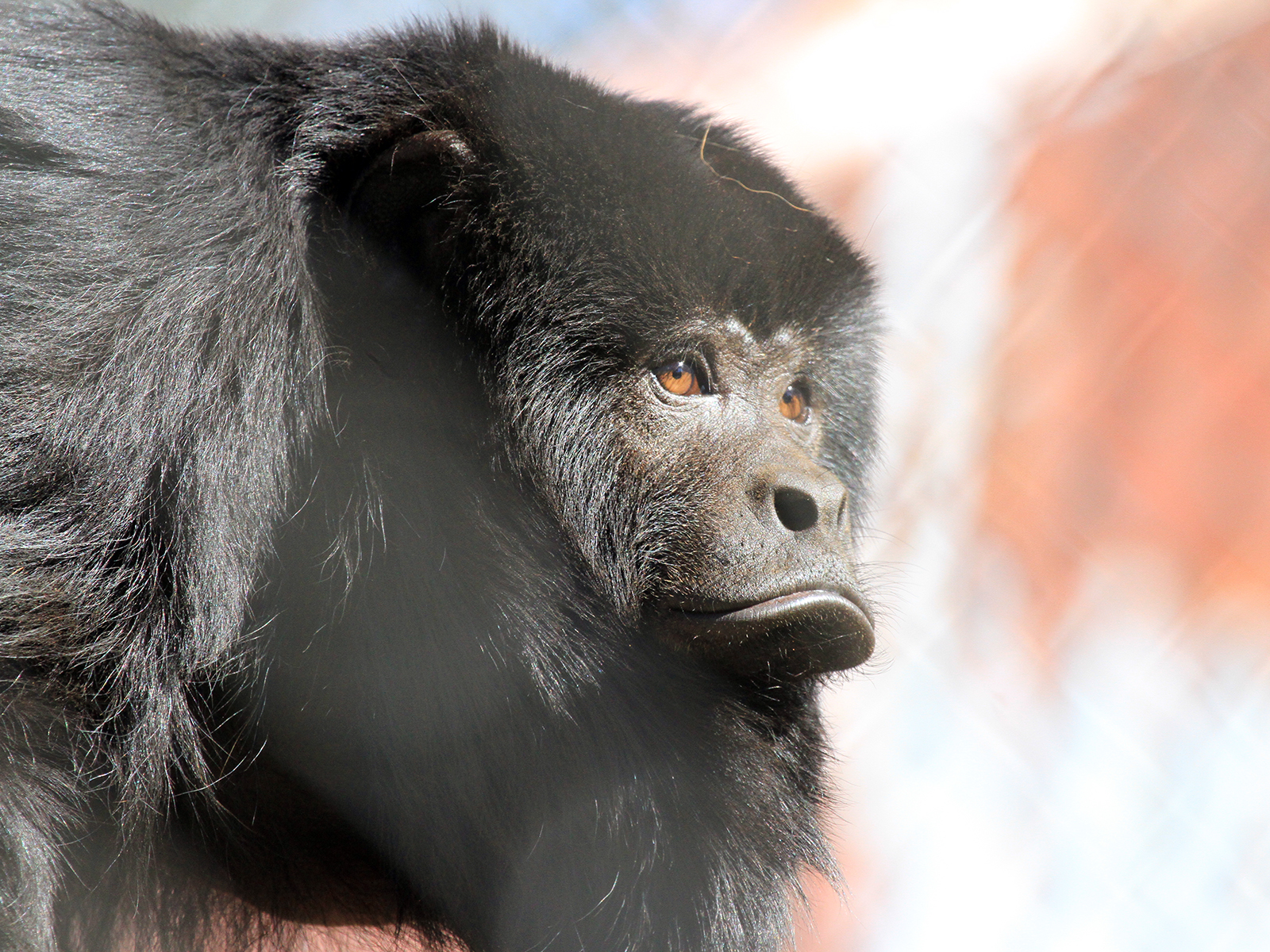Black Howler Monkey
Alouatta caraya
Class
Mammalia
Order
Primates
Family
Atelidae
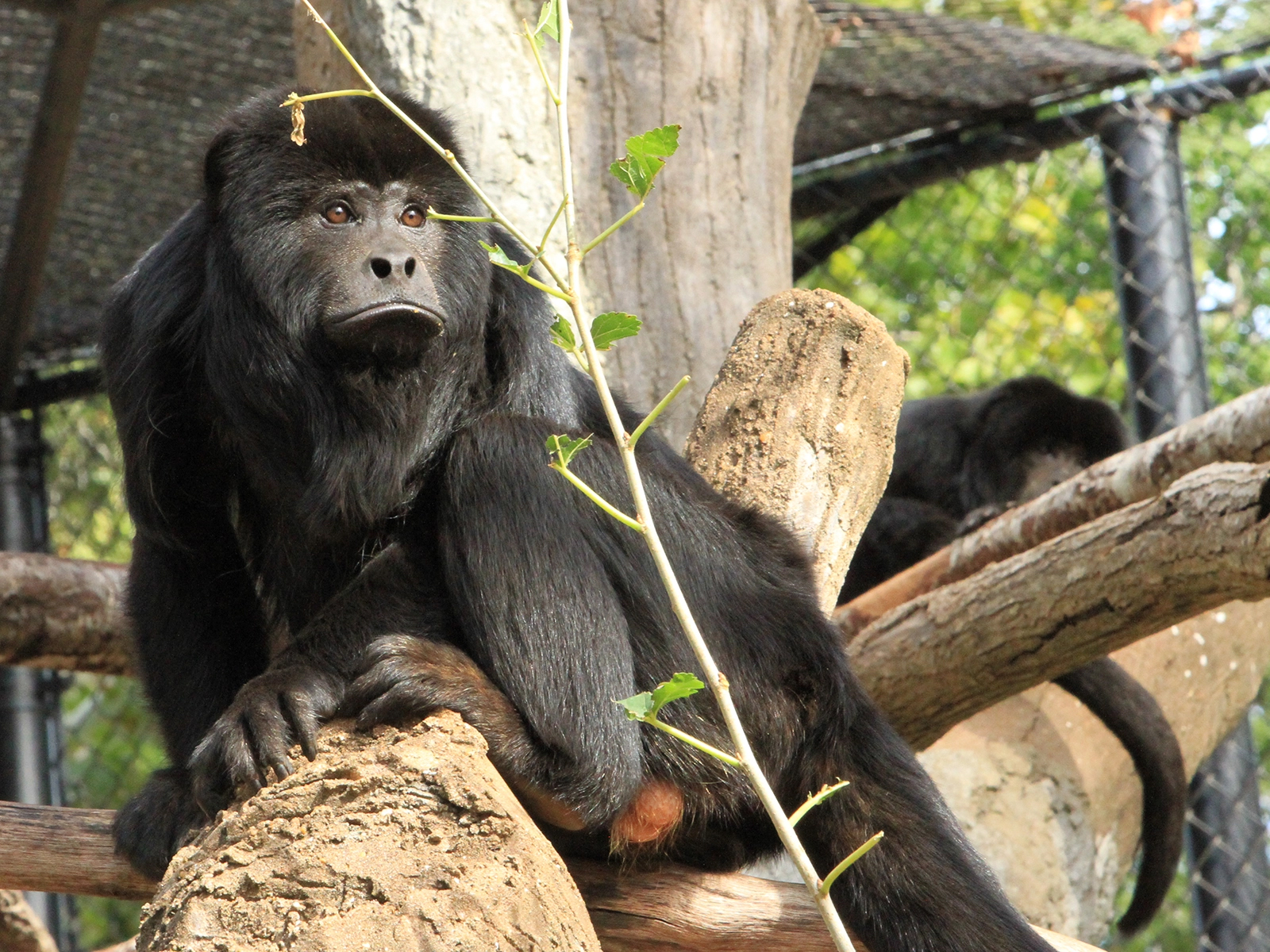
Mammalia
Primates
Atelidae
Eastern Bolivia, southern Brazil and Paraguay, and northern Argentina
Body length: 15 - 28 in
Tail length: 20 - 30 in
Weight: 12 - 20 lbs
Prefer tall, aged forests; occupy the middle and upper canopies of the trees
1 - 2 (Usually 1)
Gestation: 180 - 194 days
Canopy leaves, fruits such as figs and plums, buds, flowers, and sometimes nuts
Least Concern
Males do most of the howling. They can be heard 1.8 miles away in the forest, and 3 miles away over water.
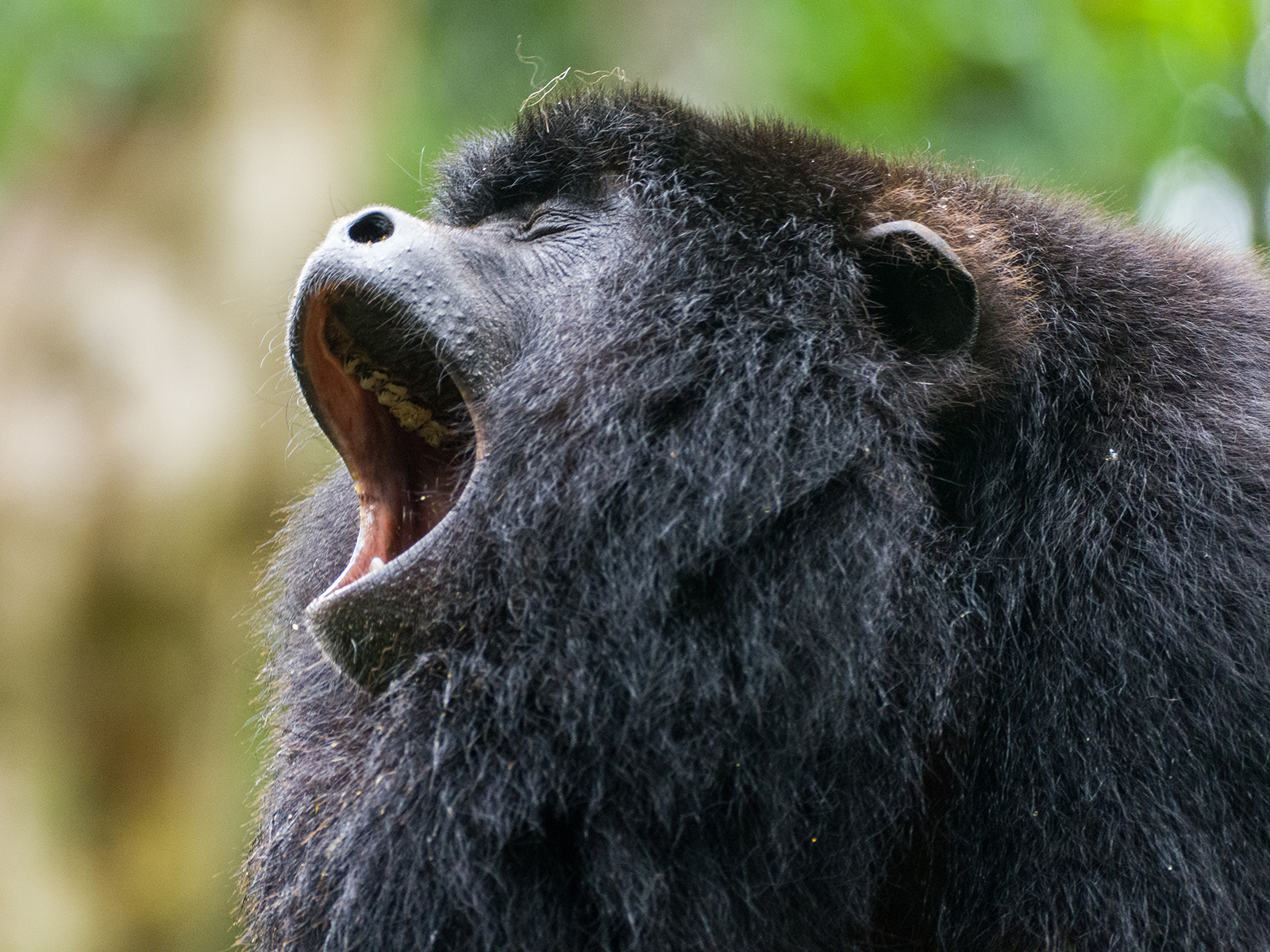
The hyoid bone in their throat is modified and forms a bony box called a corniculum. The corniculum is an egg-shaped pouch that acts as an amplifying chamber, enabling these monkeys to out-howl all other land animals. They use loud howls, grunts, roars and barks to defend territory.
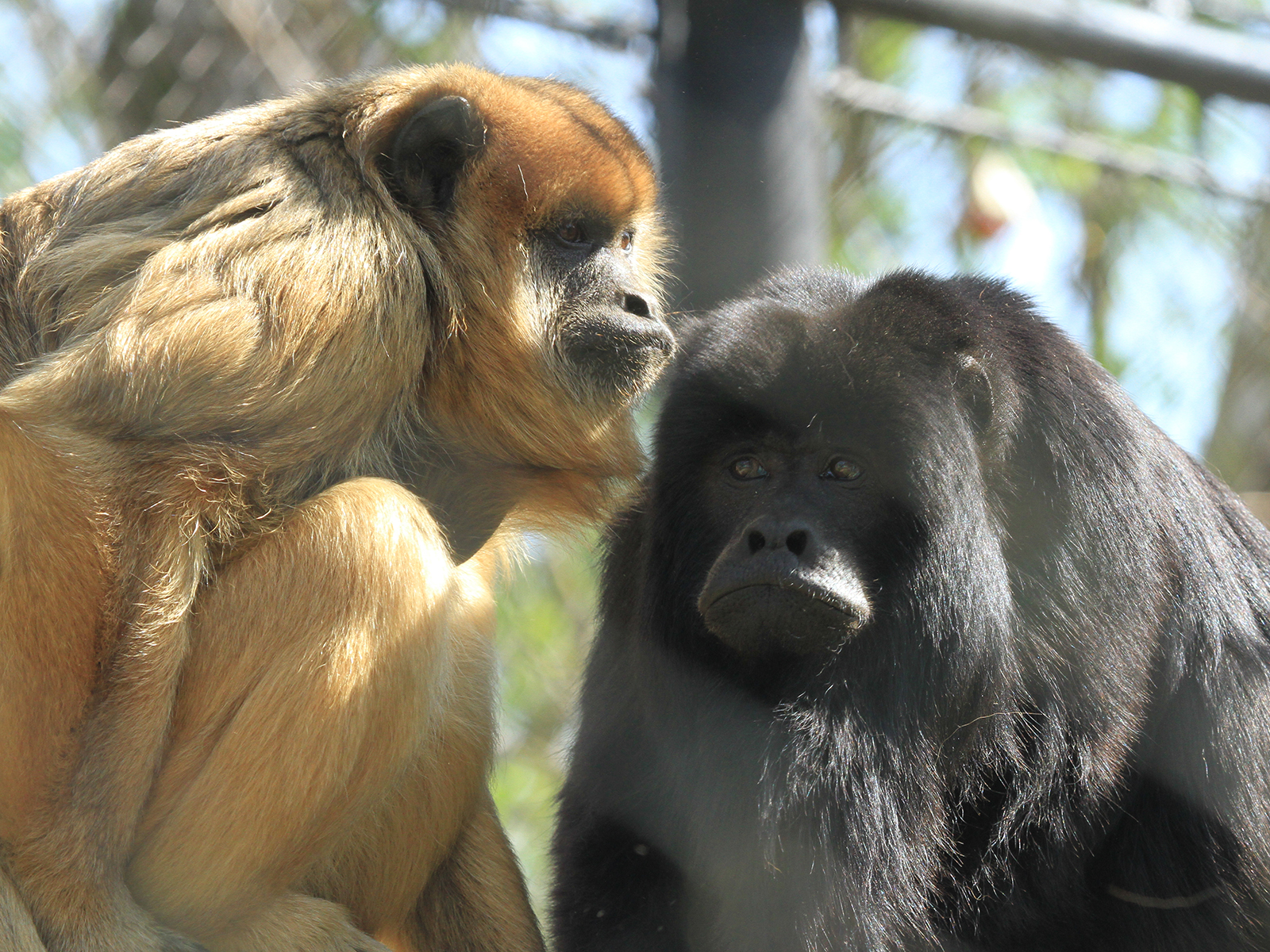
Males and females are sexually dimorphic; adult males are black, adult females and juveniles are a golden tan color. They are arboreal, diurnal, and have a prehensile tail.
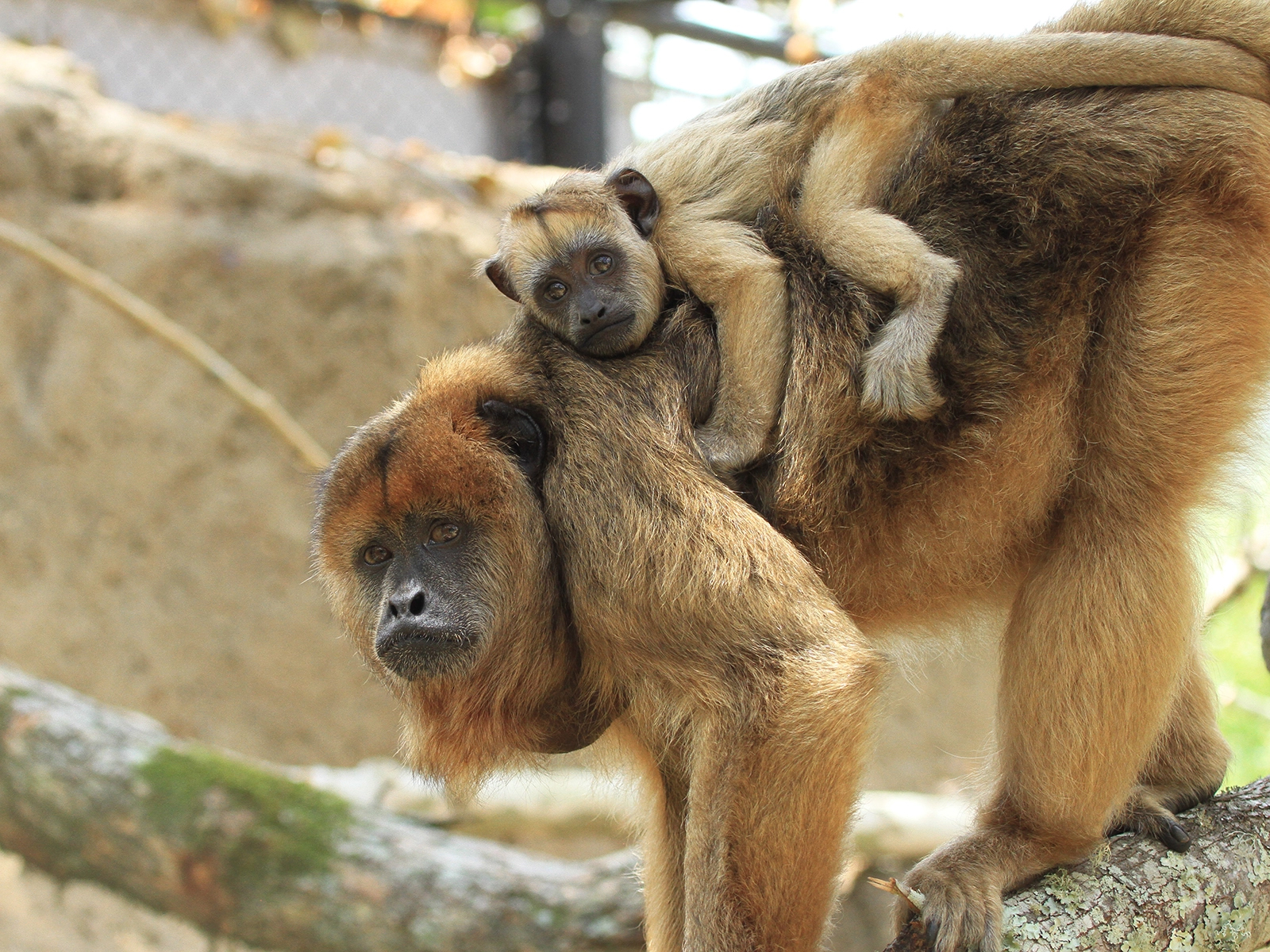
Troop sizes range from 3 to 19. Troops commonly have 1 to 3 adult males and 2 to 7 adult females.
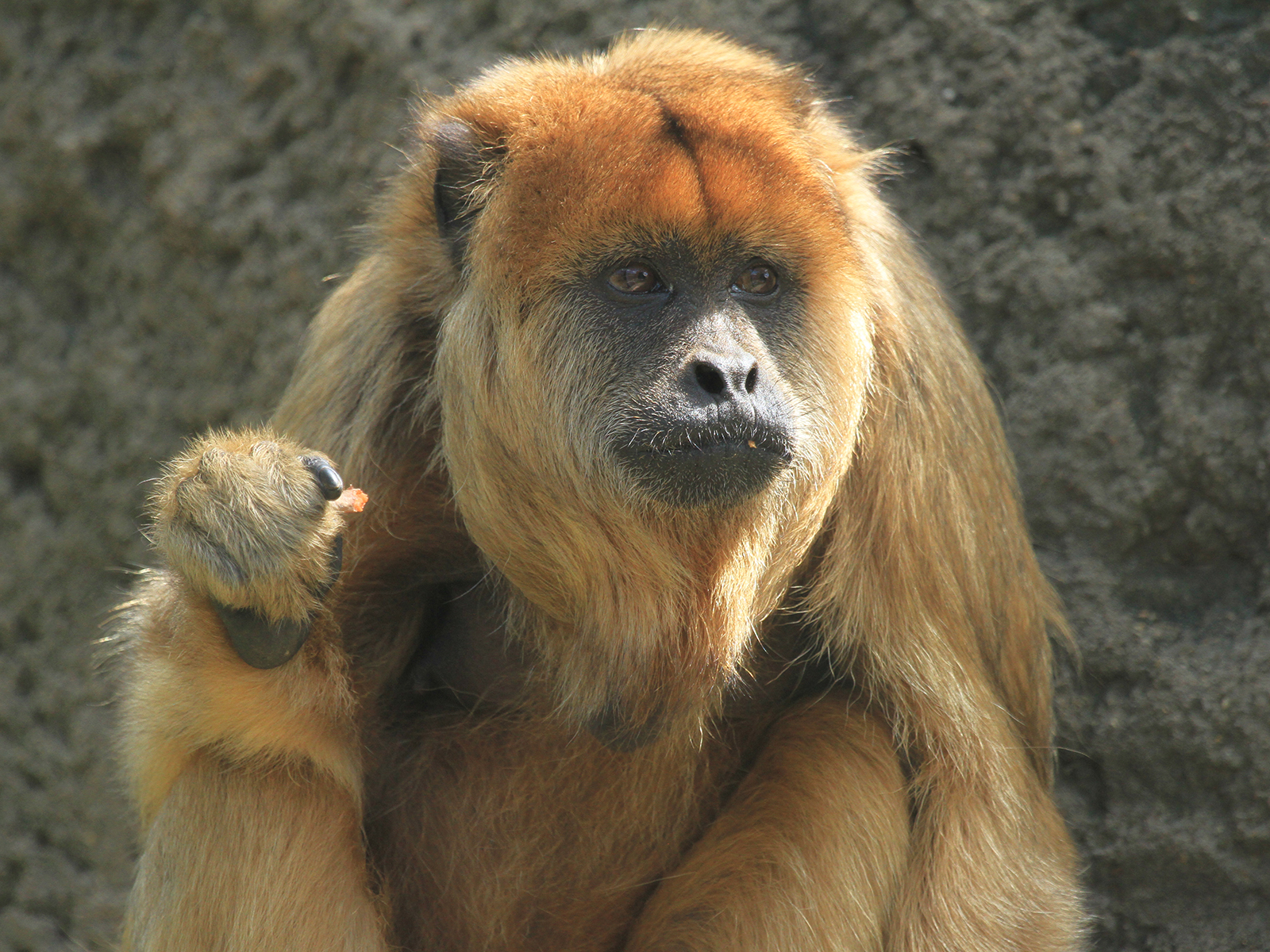
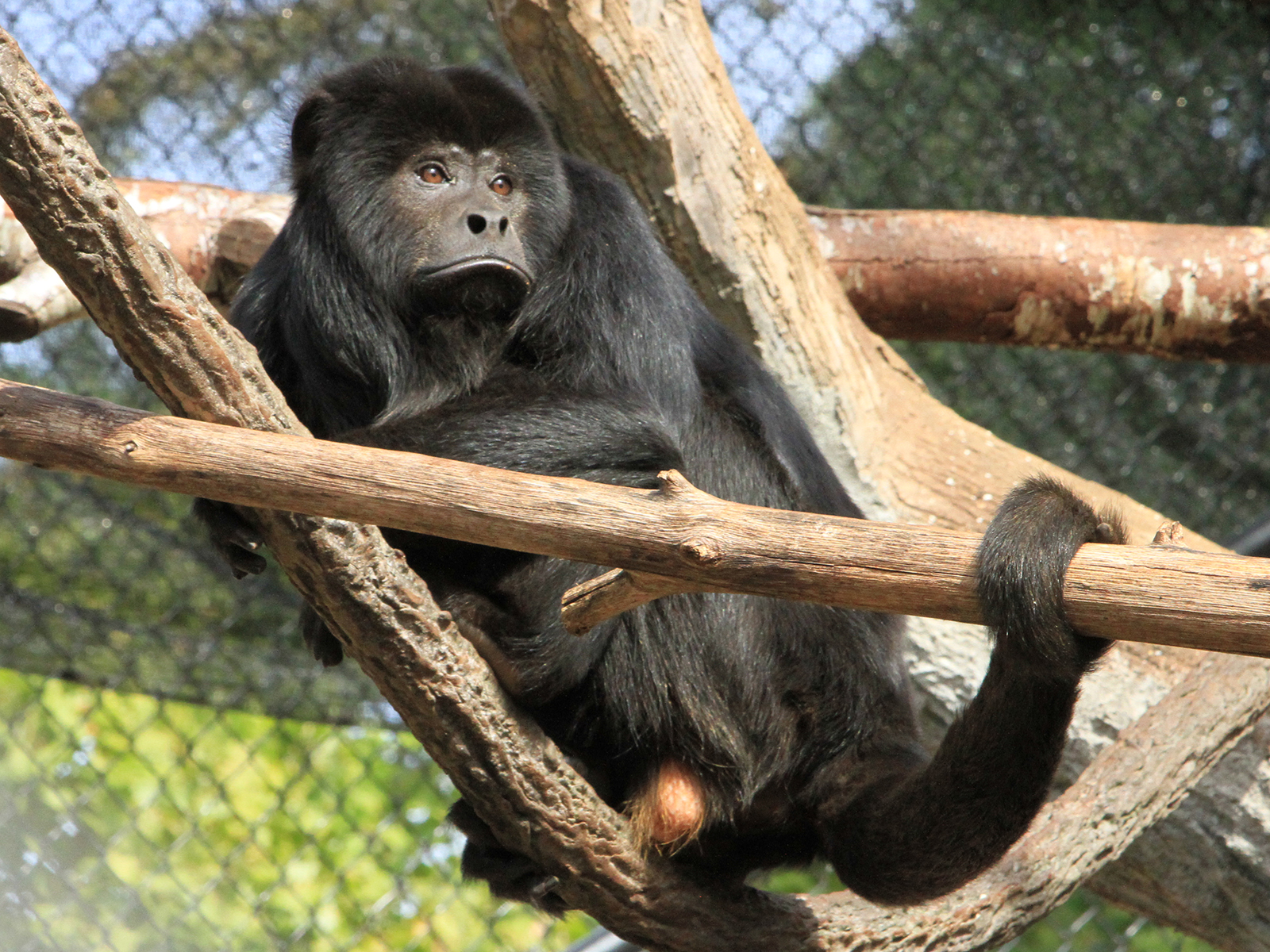
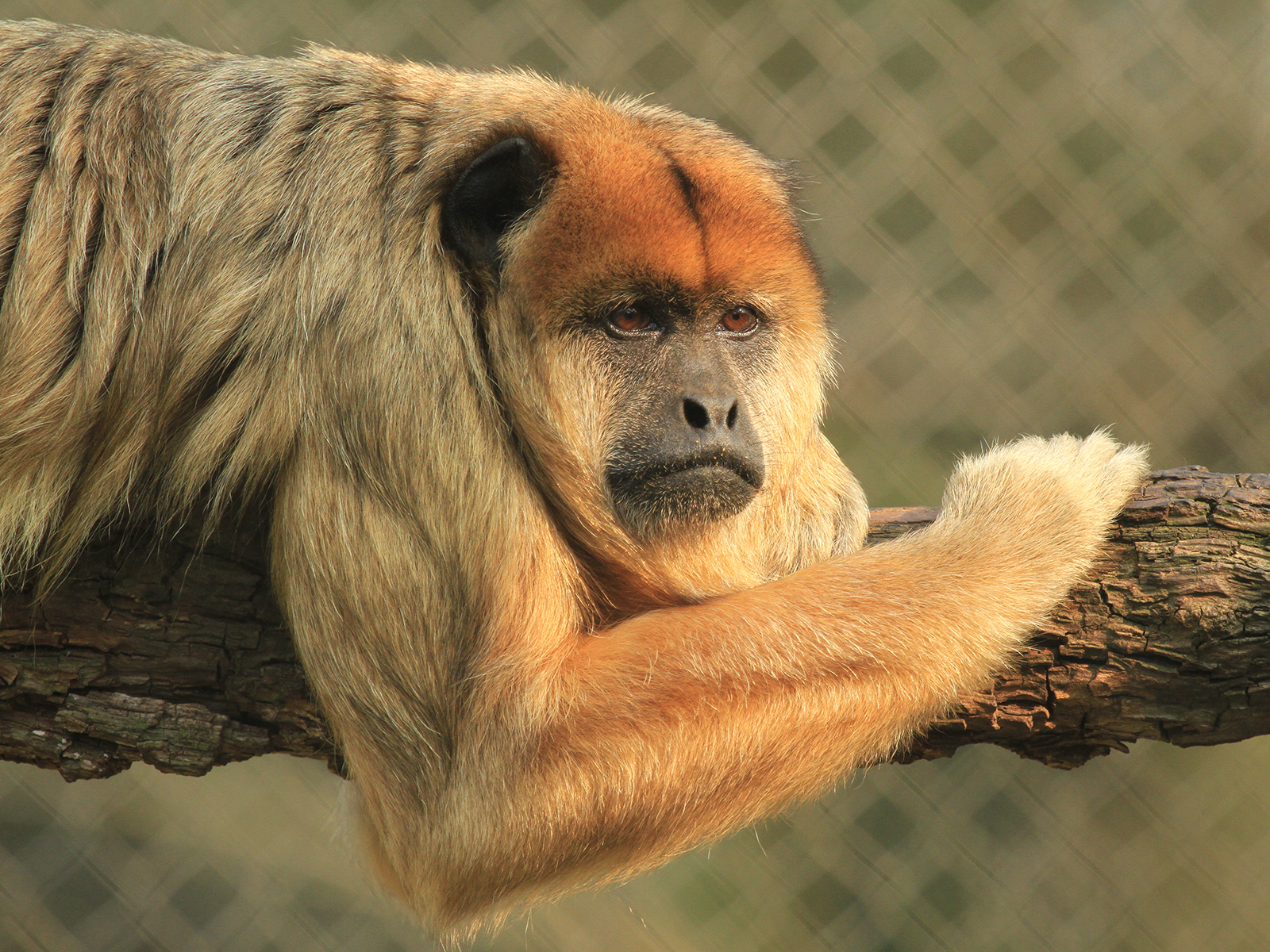
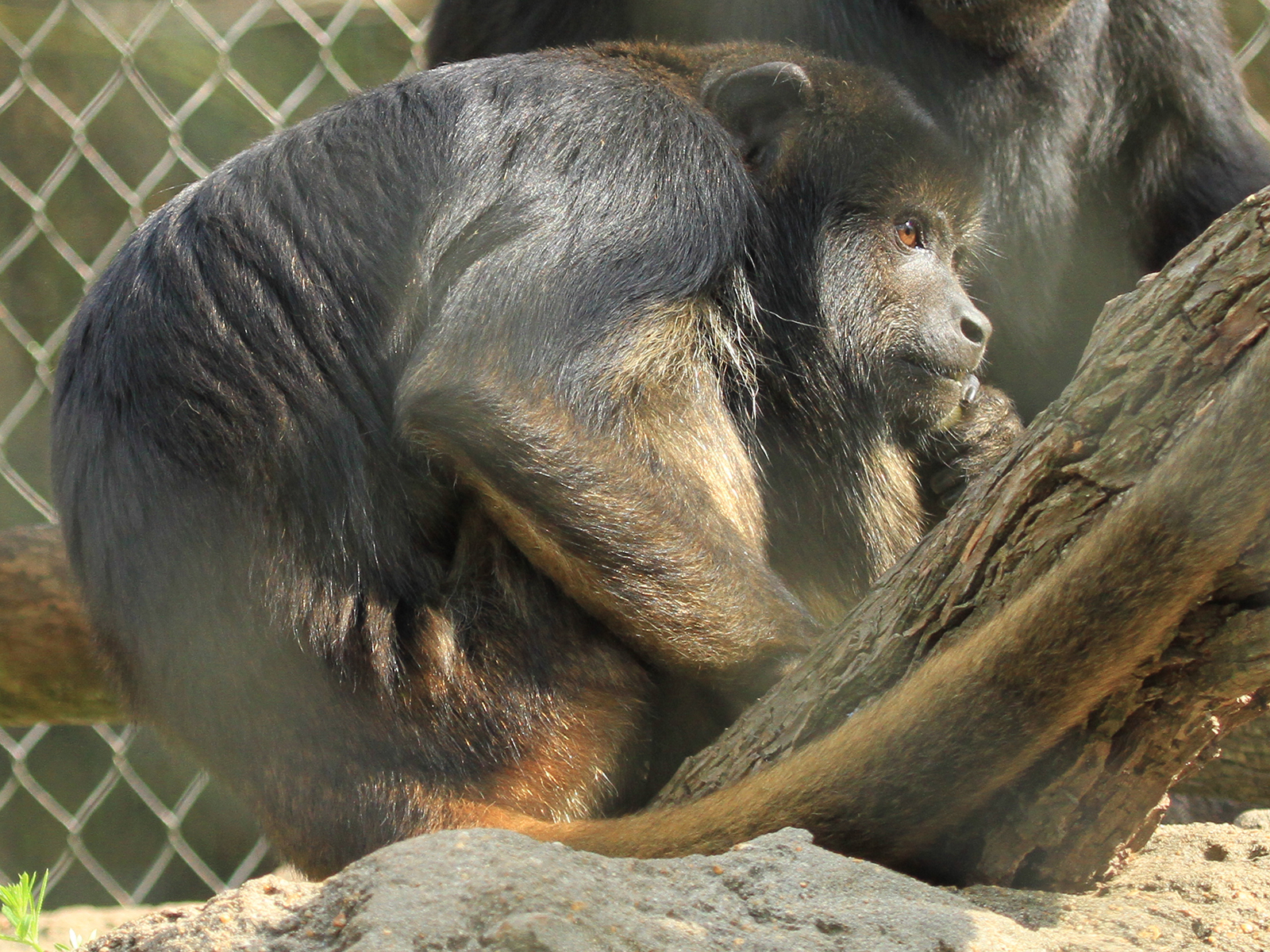
Howie is the son of Cody and Lola.
The primary threat to black howler monkeys is habitat loss due to agricultural development. By making more sustainable choices, we can reduce our personal impact.
When you're shopping for food or other goods, look for products certified as sustainable, such as those from the Rainforest Alliance. These certifications ensure that the products are produced in a way that protects rainforest ecosystems.
